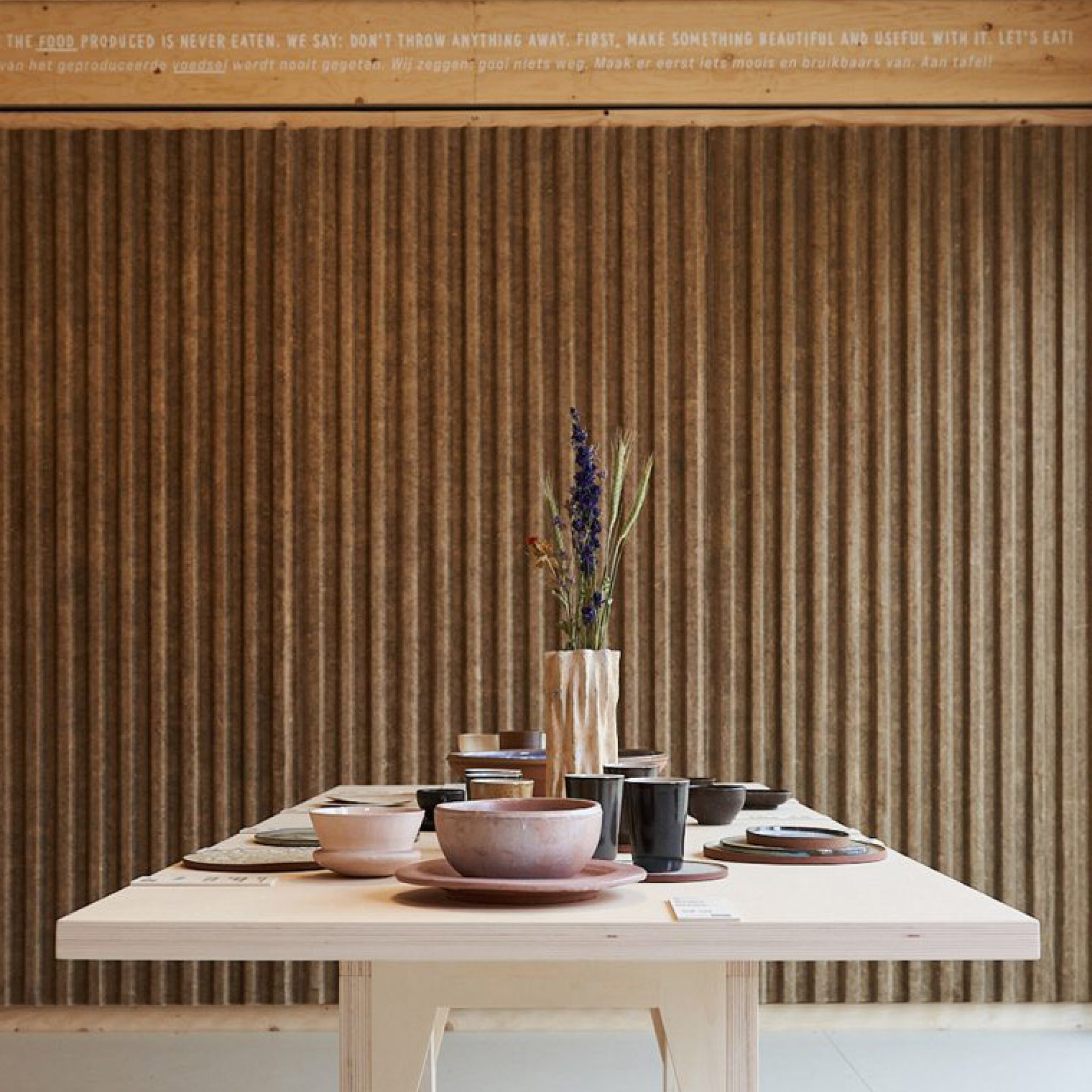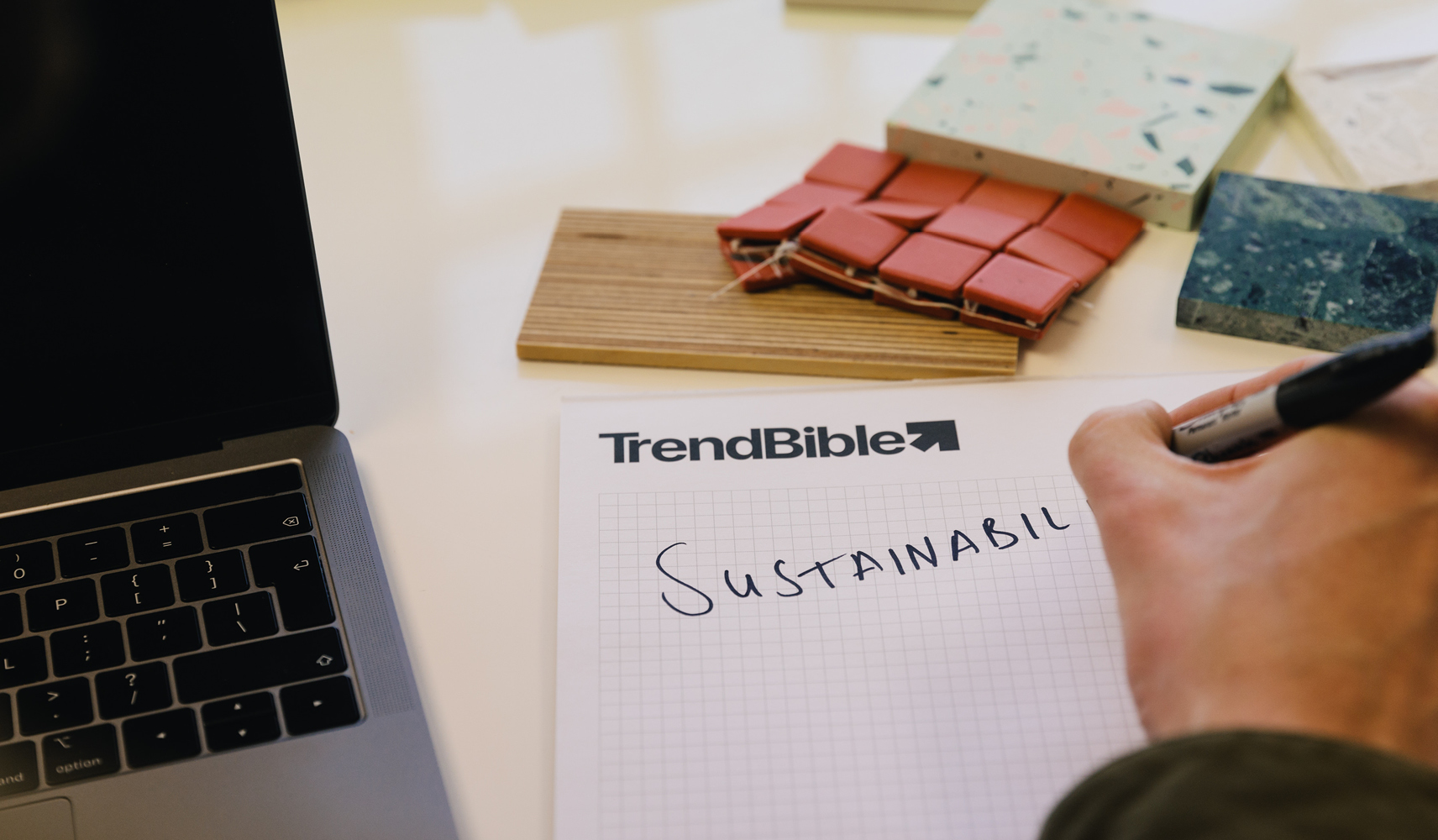Shaping a Sustainable Homeware Industry through Trend Forecasting
 BioBased Creations
BioBased Creations Undeniably creating products for the homewares industry has a direct impact on the planet and our precious natural resources – and it’s a problem the modern householder is no longer willing to tolerate.
In recent interviews for BBC Radio 4 and Foresight Folk, our Founder and CEO Joanna Feeley and Trend Editor Wendy Lowe discuss the nuances and complexities of fast furniture trends and our role as trend forecasters in shaping good decision-making for a more sustainable homeware industry and a better world.
The homeware industry has some big problems to tackle.
300 million litres of paint go to landfill in Europe each year. Nearly half a million mattresses go to landfill each year in the USA. Singapore’s landfill space may run out altogether by 2035. Less than 25% of plastic packaging in France is currently recycled. By 2050, air pollution is projected to become the top cause of environmentally related deaths worldwide.
Behind these stats are stories about how products are designed, manufactured and marketed, used and discarded, and the corporate decision maker’s role in this cycle is up for review.
What’s driving the fast furniture fix?
The global market for home décor, furniture, textiles and DIY has grown exponentially and is expected to continue to grow until 2030. Within the past few years, the steady rise in mass-produced homewares and home accessories, often known as ‘fast homeware,’ which like fast fashion is now an environmental concern.
In a recent interview for a BBC Radio 4 documentary “The Fast Furniture Fix” our Trend Editor Wendy Lowe explains ‘people are increasingly living more transient lifestyles and are put off by the commitment that a big investment in expensive furniture brings. With an ongoing cost of living crisis, price is the most key factor in making a purchase, and a big reason for those opting for fast options. Particularly for younger consumers or first-time buyers, “fast” allows them to get started; at an affordable price.’
Style and increased awareness of interior trends are also contributing factors gaining further significance during the Covid-19 pandemic, as people spent more time there. Wendy says, ‘We saw the overnight growth of the ‘home influencer,’ as many influencers and content creators previously in the fashion space pivoted their content to represent the importance of the home. Social media platforms such as TikTok and Instagram quickened the pace and influx of homewares as an extension of the wardrobe.’
It’s not all on brands and retailers; consumers must make good decisions too.
‘Buying “fast” or mass-produced furniture and homeware is not inherently bad,’ Wendy explains, ‘rather it is our mindsets and understanding of product lifecycles and disposability which is a problem.’
In a recent interview with Foresight Folk Joanna Feeley, Founder and CEO at TrendBible describes how some consumers will still prioritise convenience and speed over ethical beliefs. Joanna explains ‘there are some who are happy to buy virgin plastics; that opt for convenience and need things urgently now. There’s a whole market willing to cater for that. But there is space for brands that want to do better, and they must take their consumer on a journey and educate them for a more sustainable homeware industry. At TrendBible we are seeing a good shift towards that.’

Momentum is building in the conscious consumer mindset and a brands’ ethos around sustainability.
On describing the role of a trend forecaster and her experience working with brands and businesses Joanna explains, ‘at TrendBible we help to shape the product lines and messaging for some of the world’s largest and most impactful organisations within the home and interiors industry. As trend forecasters, we have a responsibility to ensure our forecasts equip individuals in these organisations with future trends that inform, smarter decisions for the sake of the planet and a better world.’
‘When TrendBible first started, brands and retailers would contact us for help on choosing the right colour palette, or for a print and pattern forecast. Whilst we still do some of that work now, we are finding that clients come to us with bigger challenges. For example, how to create a furniture range that’s fully inclusive, how to develop a mattress brand with true eco credentials, and how to develop a wall paint colour range that creates specific types of moods and atmospheres to support those with autism and other neurodivergent conditions. These are the challenges brands, designers and manufacturers face today and they know it must be designed into the product at the very start.’
Corporate decision-makers need to make better decisions if they are to maintain relevance with their audiences and stay ahead of policy change.
With over 20 years of experience in helping global brands, retail and organisations predict trends and apply them, Joanna explains that it’s always about supporting the individual, not just the company they work for.
‘It is these people who need strong decision-making skills because of the demands made of them; they cannot produce anything that doesn’t sell. They cannot be responsible for waste that goes to landfill. The pressure on them to make the right decisions is extremely high and the consequences of getting it wrong can be tough. Through trend forecasting, TrendBible strive to make these individuals in businesses feel completely equipped and confident. They need to know they have a strong idea backed up by our forecasts when facing challenging questions.’
Well designed, meticulously profiled products will resonate with their intended audience and produce less waste and less harm to the planet.
Householders’ beliefs and attitudes shift, driven by a number of catalysts, which in turn inform new behaviours. What householders think, feel, and do changes, and with it – their tastes and values. Companies that keep track of these changes – or better still, anticipate those years in advance – are supremely positioned to serve their audiences well. A company that uses trend forecasting will know what’s going to resonate with their future consumer, and when.
With your consumer increasingly conscious of reuse and regeneration, what steps can you take to apply this vital mindset to the products and services you create and sell for a more sustainable homeware industry?
Unpack and explore further a new direction of sustainability in our report series when you subscribe to our Premium membership at My TrendBible.
My TrendBible is our trend subscription service dedicated to The Future of Life at Home and is designed to inspire and spark ideas and give your teams confidence in actioning trends for a more sustainable homeware industry.